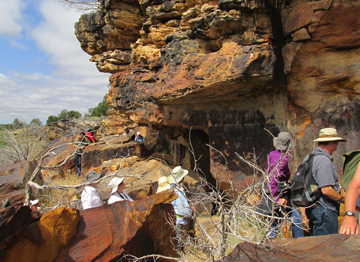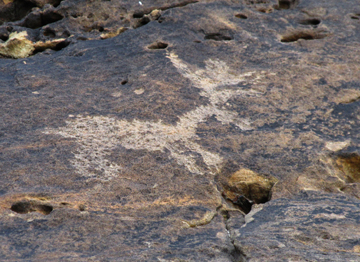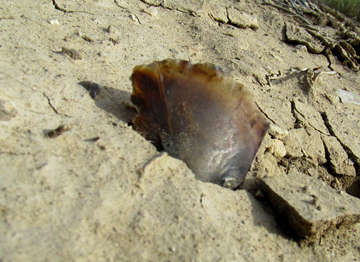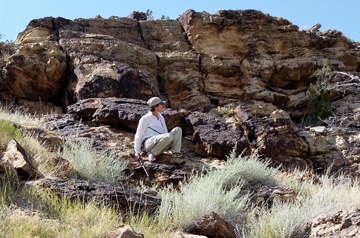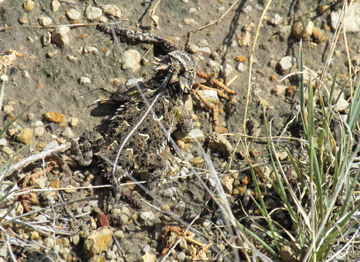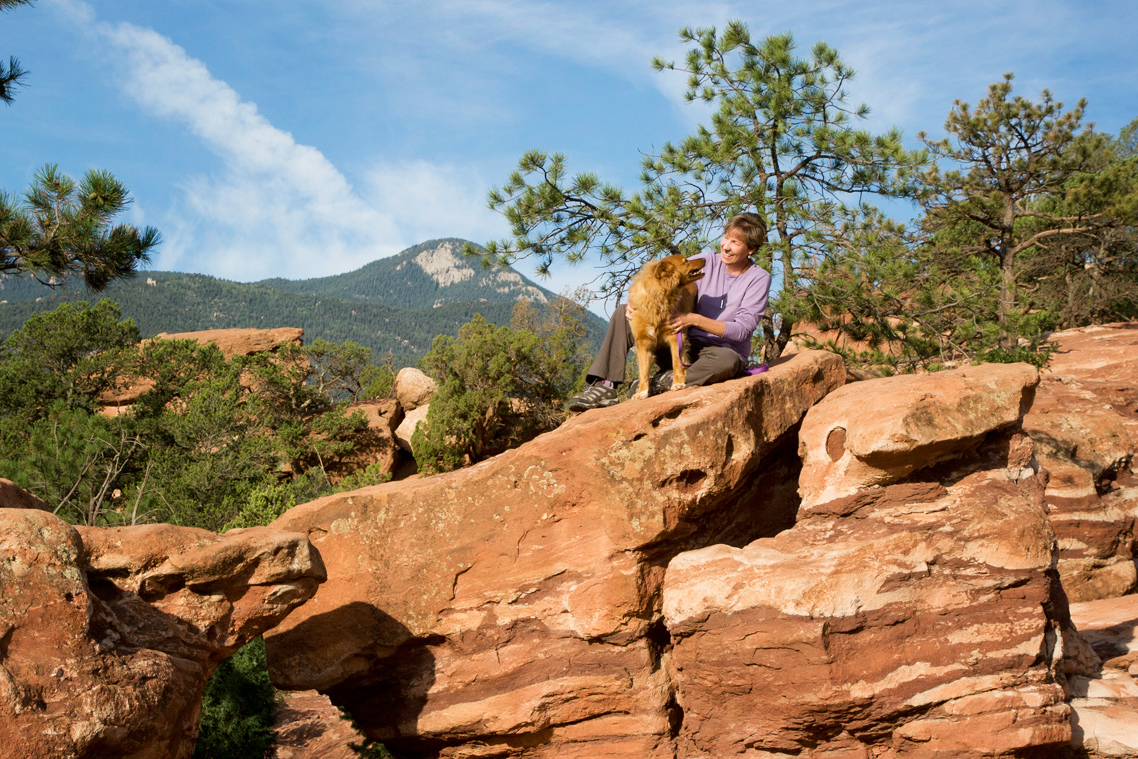Prehistoric discoveries
Archaeological field trip at Fort Carson’s Piñon Canyon Maneuver Site
Our local chapter of the Colorado Archaeological Society got a rare treat: A guided tour of prehistoric sites in the normally inaccessible Piñon Canyon Maneuver Site in southeastern Colorado. We were encouraged to poke around to discover rock art (petroglyphs and pictographs), dwellings, food-storage granaries, and scattered stone and ceramic artifacts. Many are approximately 1,000 years old.
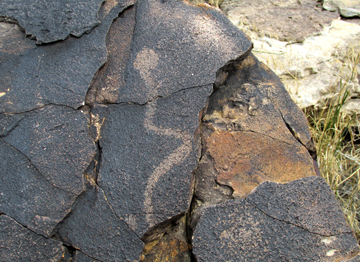 A favorite discovery of the day was this petroglyph rattlesnake.
A favorite discovery of the day was this petroglyph rattlesnake.
Unfortunately, no actual live rattlers were sighted. I say “unfortunately” because I insist that a rattlesnake sighting proves you’re having an adventure. ;>
Here’s a primer on prehistoric southeastern Colorado:
- Throughout prehistoric times, multiple cultures (groups of people) competed for resources (water, plants, and animals) in southeastern Colorado.
- Approximately 1,000 years ago, during what is now called the Diversification Period, agriculture was just getting a foothold in southeastern Colorado. Some cultures were sedentary farmers who stayed year-round. They constructed permanent dwellings in hut-like structures and rock shelters (“caves”) in the rugged outcroppings and ridges. An example is the Apishapa Culture, named after the Apishapa River in southeastern Colorado.
- Other cultures – hunter-gatherers and cross-country traders – moved through the area and often raided the farming communities. They did not construct permanent dwellings, and they made camp in the wide-open valleys. An example is the Barnes Culture, named after an archaeologist who surveyed and excavated these sites.
- Most of the rock art (petroglyphs and pictographs), dwellings, and artifacts we found dated to the Diversification Period, which was about 500 to 900 years ago (approximately 1100 to 1500 AD).
Do you know…
- What is the difference between a petroglyph and a pictograph? Petroglyphs are pecked into the stone (as the rattlesnake rock art image above). Pictographs are painted on stone with long-lasting pigments.
- What do you do when you find a historic or prehistoric artifact? You can carefully pick it up, look at it, and take a picture – then you must put it back down. You never, ever keep it. This is ethical and responsible. And it’s the law.
- Why did I need to receive permission from Fort Carson to publish the following images? Because we must be careful not to divulge the location of ancient sites and artifacts. In fact, I was asked not to share the image of a certain pictograph, because it is considered sacred to several American Indian tribes.
All photos by Patrice Rhoades-Baum except the image of Patrice (on the lookout for more rock art!), taken by Michael Baum.
Comments are closed.
